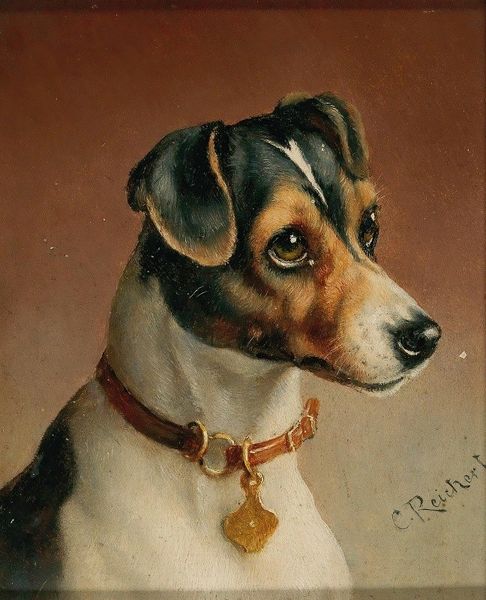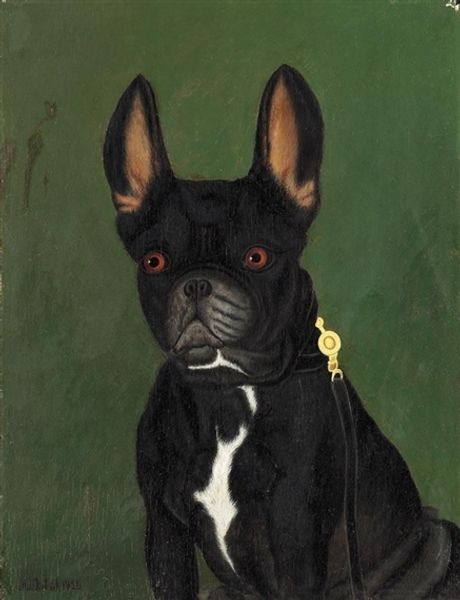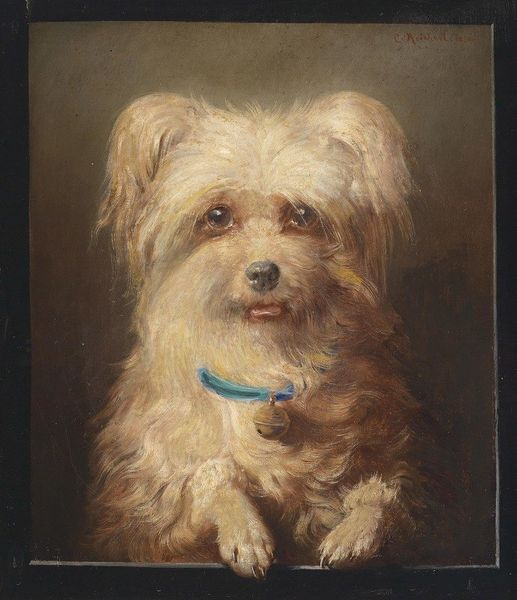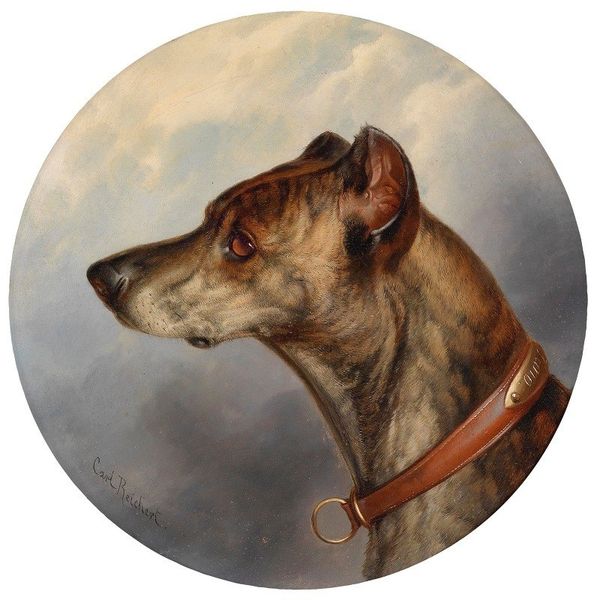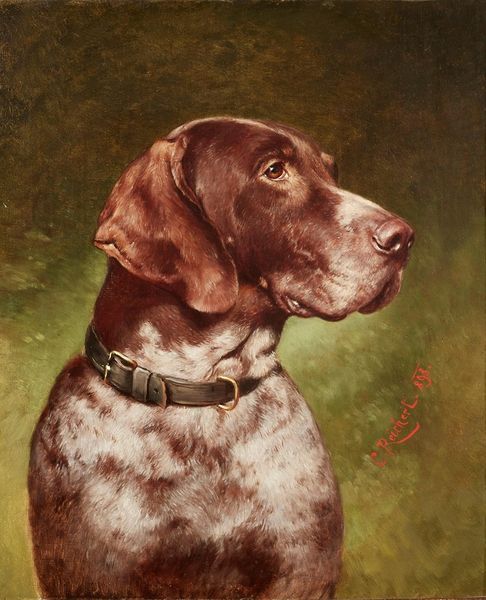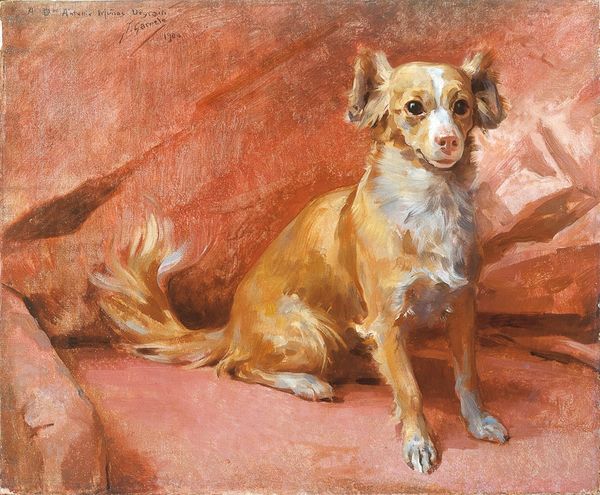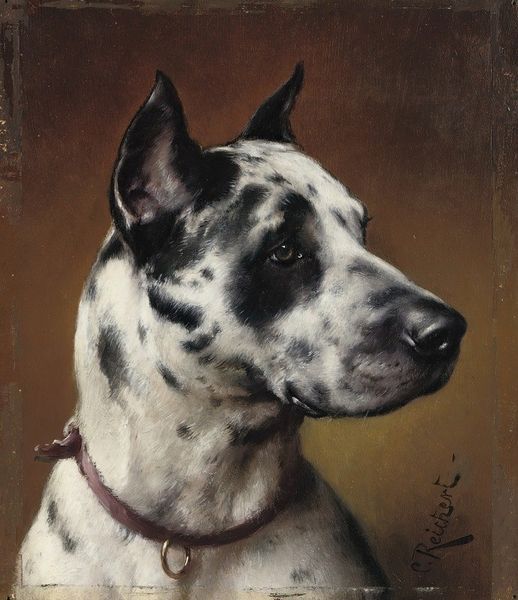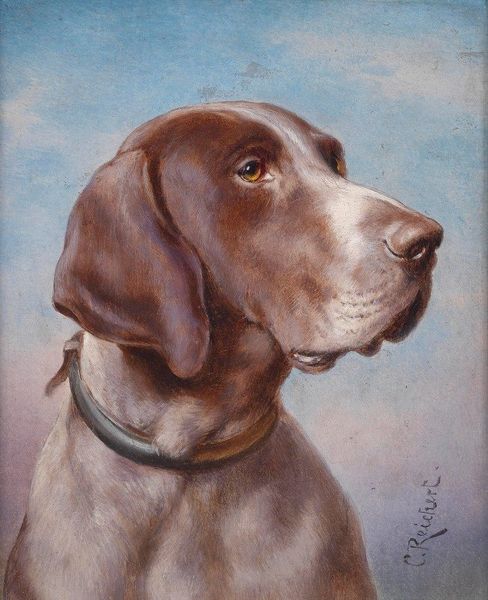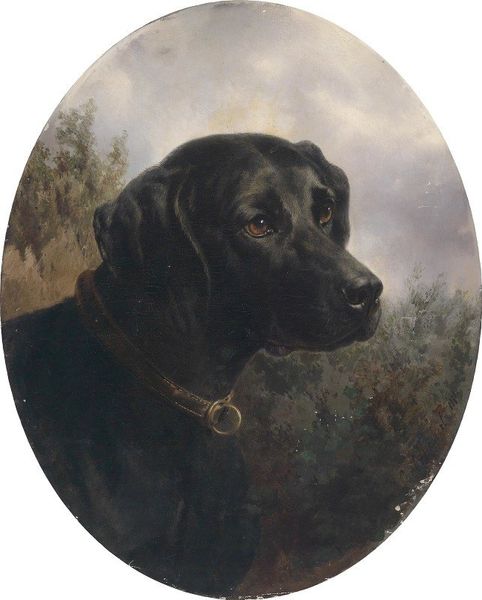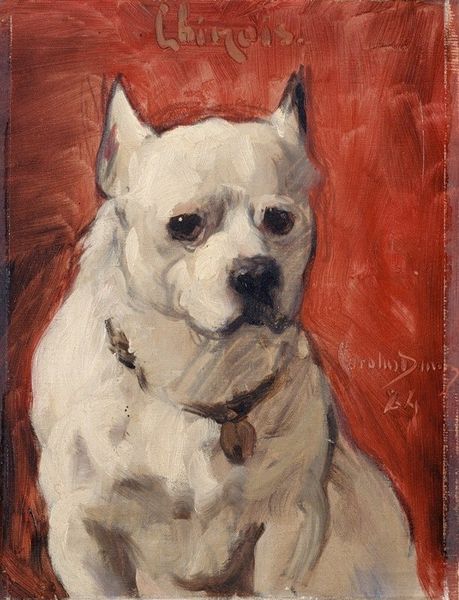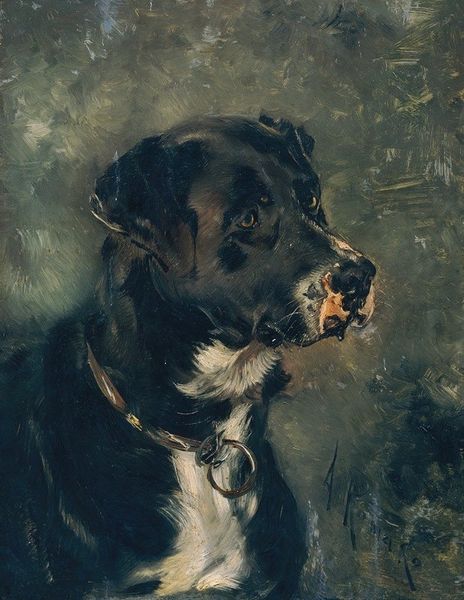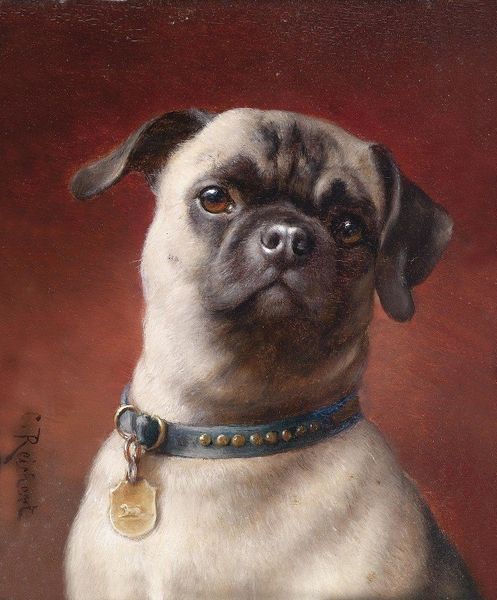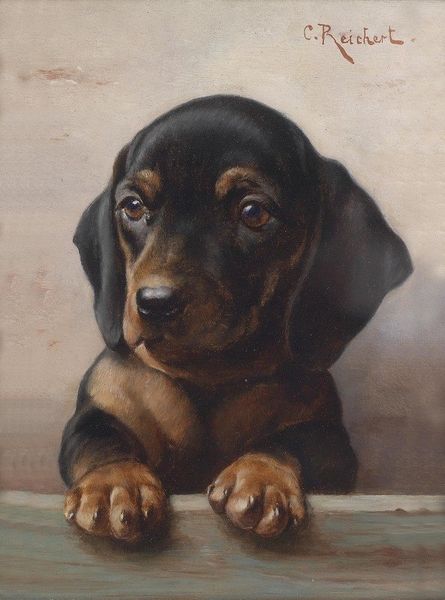
#
animal
#
male portrait
#
portrait reference
#
portrait head and shoulder
#
animal portrait
#
animal drawing portrait
#
facial portrait
#
portrait art
#
fine art portrait
#
self portrait
#
digital portrait
Copyright: Public Domain: Artvee
Curator: This is Carl Reichert’s, "Pinscher in Collar with Bells." What's striking to you about this image? Editor: Well, right away, those eyes! They're so round and earnest, a little bit mournful even. It's like this dog knows all the secrets of the universe but can’t quite tell you why the mailman is always evil. Curator: Interesting take. Animal portraiture, like other forms of portraiture, says a lot about status, access and representation. Reichert created many such pieces for patrons seeking to memorialize their beloved pets, imbuing them with human-like dignity. How does that manifest in your opinion? Editor: Definitely that upright posture, the way the collar's almost like a gentleman's cravat, and yes, those human-like soulful eyes we keep circling back to! But there is the other end of things when considering domestic animals as companionate others: I feel it too when looking at the image, it reminds of a pet’s perspective that centers around our relationship. It’s us, it’s always been us for them. So who are they when nobody's home? It's kind of mind-blowing, isn’t it? Curator: Indeed. Also consider the bells on the dog's collar, signifiers of belonging, as a possible reflection of bourgeois values or conspicuous consumption. Editor: Ha! So not only does Fido look aristocratic, he jingles his way around the house announcing his presence. Is it luxury, a warning system, a status thing? Is this one loved dog or an object? That duality sits well within the artistic execution as a whole, in how lovingly detailed the subject is painted, rendering their personality clear, as opposed to only focusing on their likeness, giving him value and perhaps freedom that’s just been enabled thanks to artistic practice itself? What I mean to ask: would we care that much without the image to look at? Would we bother stopping for more than one fleeting thought without such striking pose and details to pull us closer and trigger our feelings? Curator: Portraits always tell a story about more than just the subject—they reveal the attitudes and assumptions of the artist and the culture around them. Editor: I think this painting hits right at that spot. It gets to all the complicated affections, societal expectations, and fundamental questions, hidden in our simplest relationships.
Comments
No comments
Be the first to comment and join the conversation on the ultimate creative platform.
